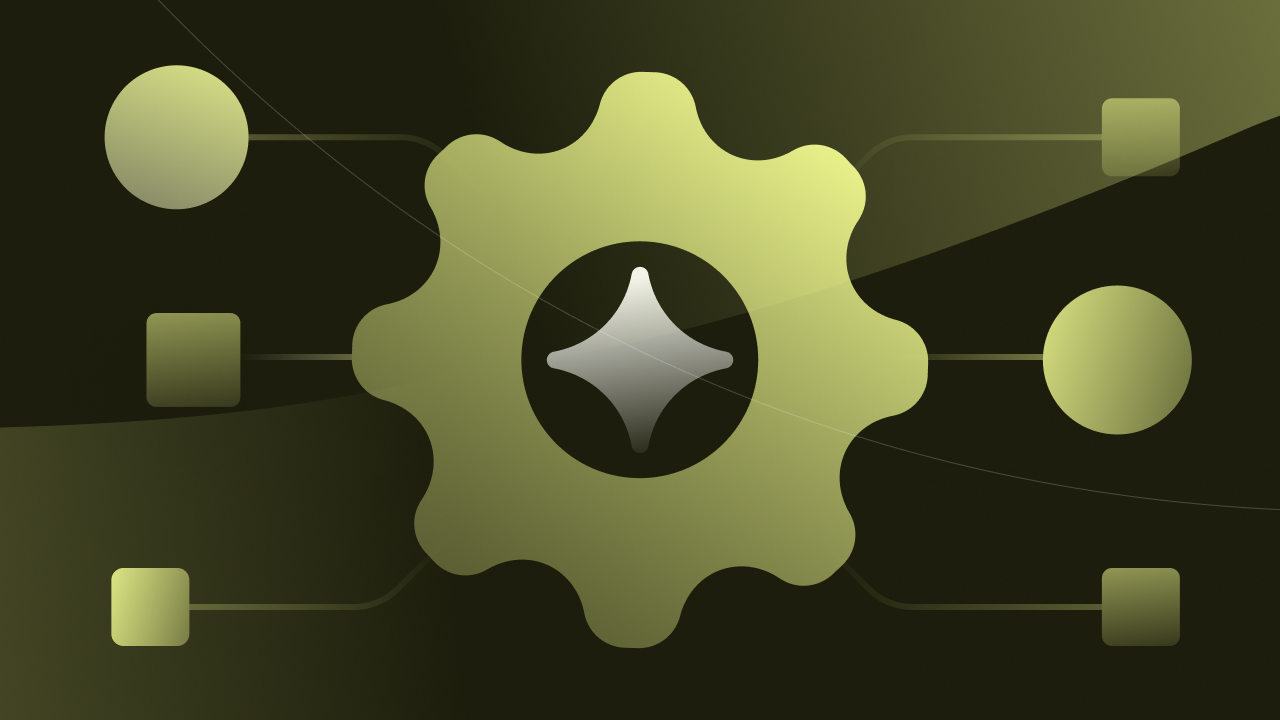Terms like Generative AI and Large Language Models often dominate discussions today, and are frequently used interchangeably. However, grasping the precise relationship and distinct capabilities of Generative AI vs. Large Language Models is paramount. A nuanced understanding empowers astute technology investments and unlocks advanced capabilities within core business processes.
This article aims to clarify the critical distinction between Generative AI vs. Large Language Models (LLMs). We will precisely define both technologies, delineate their intricate relationship, and explain their operational dynamics—both individually and synergistically—to unlock profound advancements in business workflows. By showcasing various practical applications, including intelligent automation, novel content creation, elevated customer service, and sophisticated data analysis, this content delivers a comprehensive overview, enhancing comprehension of these cutting-edge AI paradigms. In essence, it serves as a foundational resource for enterprises seeking to harness these technologies effectively, championing their combined role in fostering greater innovation and efficiency.
What is Generative AI?
Generative AI represents a broad and exciting category of artificial intelligence. Its defining characteristic is the ability to produce new, original content that has never existed before. Unlike traditional AI that might analyze or classify existing data, Gen AI creates. This capability extends across various modalities:
- Text: Drafting emails, articles, scripts, or summaries.
- Images: Generating photorealistic pictures, artwork, or design concepts.
- Audio: Composing music, synthesizing voices, or creating soundscapes.
- Code: Writing software code snippets or entire programs.
- Video: Producing short clips or animations.
The “generative” aspect means the AI learns patterns, structures, and styles from vast amounts of existing data and then uses that knowledge to generate novel outputs that are statistically similar to its training data but are not direct copies. This transformative power underscores the significance of Generative AI in shaping future business capabilities.
Understanding Large Language Models (LLMs)
A Large Language Model (LLM) is a specific type of artificial intelligence primarily focused on understanding and generating human language. The “Large” in their name signifies their immense scale, being trained on colossal datasets of text (billions to trillions of words from books, articles, websites, etc.) and comprising billions to trillions of parameters. This extensive training enables LLMs to grasp context, semantics, and grammatical structures with remarkable proficiency.
Key characteristics of an LLM:
- Text-focused: Primarily designed to process and generate human language in various forms.
- Contextual Understanding: Can understand nuances, intent, and relationships within conversations or documents.
- General Purpose (within language): Capable of a wide array of language tasks like summarization, translation, Q&A, writing, and coding.
- Predictive: Generates text by predicting the most probable next word or sequence of words.
Prominent examples of LLMs include models like OpenAI’s GPT series, Google’s Gemini, and Meta’s LLaMA. Their ability to interact with and produce human-like text has made them pivotal tools in many modern applications.
Generative AI vs. Large Language Models
The core difference between Generative AI and a Large Language Model lies in their scope and specificity. All LLMs are a form of Generative AI, but not all Generative AI models are LLMs.
- Generative AI is the Parent Category: Think of Generative AI as the umbrella term for any AI that creates new content.
- LLM is a Specialized Child Category: An LLM is a highly specialized type of Generative AI specifically built for generating textual content and understanding human language.
So, while an LLM can generate a marketing email (which is a Gen AI capability), a Gen AI model might also create a realistic image of a product that has no text involved. This is the fundamental difference between LLM and Gen AI. The term Gen AI vs LLM highlights this distinction between the broader field and its highly prominent subset.
How Generative AI and LLMs Function
Both Gen AI and LLMs operate on sophisticated neural network architectures, primarily transformers, which allow them to process data in parallel and learn long-range dependencies.
- Training: They undergo extensive training on massive datasets. For LLMs, this is text. For other Gen AI types, it could be images, audio, etc. During training, the models learn patterns, relationships, and styles within the data.
- Inference (Generation): When given a prompt or input, the model uses its learned internal representation to predict and generate new content. For an LLM, it predicts the next word in a sequence, creating sentences and paragraphs. For image Gen AI, it might generate pixels to form a new image.
- Fine-tuning & Adaptation: After initial training, these models can be fine-tuned on smaller, specific datasets to improve performance for particular tasks or align with specific brand voices.
The power stems from their ability to grasp complex patterns from data and apply that understanding to generate novel, coherent, and often highly creative outputs.
Practical Applications in Business: Leveraging Gen AI and LLMs
The combined power of Generative AI and LLMs is unlocking advanced capabilities across numerous business processes, offering significant efficiency gains and innovation opportunities.
- Intelligent Automation: Beyond traditional Robotic Process Automation (RPA), Gen AI and LLMs enable intelligent automation to handle unstructured data and complex decision points. An LLM can read and interpret nuanced clauses in a contract, extract key data points, and then use Gen AI capabilities to draft a summary or identify areas needing human review. This is crucial for streamlining complex financial or legal workflows.
- Content Creation and Marketing: Gen AI can rapidly produce high-quality marketing copy, product descriptions, social media posts, and even personalized email campaigns. An LLM can generate various versions of a blog post, while other Gen AI tools can create accompanying imagery, dramatically accelerating content pipelines and reducing time-to-market.
- Enhanced Customer Service: LLM-powered chatbots and virtual assistants provide more natural, human-like interactions, capable of understanding complex queries, providing detailed answers, and resolving issues autonomously. They can summarize past interactions for human agents, greatly improving customer support efficiency and satisfaction.
- Data Analysis and Insights Generation: LLMs can process vast amounts of unstructured textual data—like customer feedback, research papers, or internal reports—to extract insights, identify trends, and generate summaries, allowing business leaders to make faster, more informed decisions. Gen AI can then visualize these insights in novel ways.
- Personalization at Scale: By analyzing customer data, Gen AI can create highly personalized recommendations, product offerings, and communications, enhancing engagement and driving sales. An LLM might generate custom email responses or product descriptions tailored to individual preferences.
- Code Generation and Software Development: Gen AI can write code, debug programs, and assist developers in creating new applications faster. This accelerates software development cycles and improves code quality, transforming how digital solutions are built.
These applications illustrate how the synergy between Generative AI and LLMs is reshaping enterprise capabilities across various functions.
Smarter Automation with Generative AI and LLMs
Kognitos stands at the forefront of intelligently applying Generative AI and LLMs to revolutionize enterprise processes, s is a safe AI automation platform that uniquely leverages the power of Generative AI vs. Large Language Models to provide natural language process automation.
Kognitos integrates Gen AI and LLM capabilities fundamentally by:
- Understanding Human Intent: Kognitos’s core AI reasoning engine, powered by advanced LLMs, understands business processes described in plain English. This eliminates the need for complex coding or visual process mapping. You tell Kognitos what to do, and it understands.
- Intelligent Exception Handling: Traditional automation breaks down with unforeseen variations. Kognitos’s native AI skills, informed by LLMs, allow it to intelligently detect, diagnose, and resolve exceptions autonomously. It can even use Gen AI to draft communications for external parties or suggest solutions, reducing human intervention.
- Natural Language-Driven Automation: This is where LLMs become transformative. Business users can define, modify, and monitor complex automated workflows using natural language. This democratizes the automation of business process, making it accessible to accounting, finance, and operations teams who truly understand the process, without being programming-dependent.
- Beyond Simple Task Execution: Kognitos uses Gen AI and LLMs not just for individual tasks, but to orchestrate entire end-to-end processes, handling nuances and complexities across systems. This moves beyond traditional automation to truly intelligent orchestrated solutions.
- Enterprise-Grade and Hallucination-Free: Kognitos prioritizes reliable, hallucination-free AI, ensuring that Gen AI and LLM capabilities are applied in a controlled, trustworthy manner suitable for sensitive enterprise data and critical operations.
By intelligently applying Generative AI and LLMs, Kognitos delivers advanced, intelligent Business Process Automation solutions that unlock unparalleled productivity, strategic agility, and true digital transformation.
The Symbiotic Future of Generative AI and LLMs
The relationship between Generative AI and LLMs will continue to deepen, driving innovation across various fields. As LLMs become more sophisticated, they will power even more advanced Gen AI applications, leading to:
- More Autonomous Agents: LLMs will enable AI agents to better understand complex instructions, interact more naturally with environments, and perform multi-step tasks with greater autonomy, leading to more robust automation.
- Multimodal Generation: The ability to seamlessly generate content across different modalities (e.g., text, image, video) from a single prompt will become commonplace, enhancing creative and operational workflows.
- Hyper-Personalized Experiences: Gen AI and LLMs will craft hyper-personalized content and interactions across all touchpoints, from marketing to customer service, anticipating individual needs with remarkable precision.
Understanding the difference between LLM and Gen AI and leveraging their combined strengths will be crucial for organizations to thrive in this AI-driven future.
Discover the Power of Kognitos
Our clients achieved:
- 97%reduction in manual labor cost
- 10xfaster speed to value
- 99%reduction in human error
The fundamental difference between Generative AI and a Large Language Model lies in their scope. Generative AI is a broad category of artificial intelligence capable of creating new, original content (like images, music, or text). An LLM is a specific type of Generative AI, trained on vast text datasets to understand, summarize, translate, and generate human-like text. So, while every LLM is a form of Gen AI, not all Gen AI models are LLMs.
Understanding Generative AI vs LLM vs NLP clarifies their hierarchy. Generative AI is the overarching capability to produce novel content. An LLM is a powerful subclass of Generative AI specifically designed to work with human language at scale. Natural Language Processing (NLP) is a broader field of AI that enables computers to understand, interpret, and manipulate human language. NLP is a foundational technology for LLMs, allowing them to process and generate text effectively. While NLP focuses on language understanding, LLMs add the generation component powered by their massive training data.









